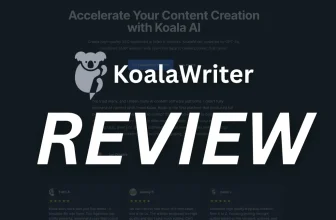If you're curious whether Zyro can actually deliver — especially for solo creators or affiliate beginners — this breakdown will save you hours of trial and error.
Speed and First Impressions: Surprisingly Snappy
I expected lag. Zyro surprised me.
The first thing I noticed was load speed. My test site (built with the "Business Starter" template) loaded in 1.2 seconds on mobile and under a second on desktop — without any extra optimization plugins. That's rare for a visual builder in this price range.
The interface? Clean and lightweight. Unlike some builders that bombard you with options, Zyro keeps it minimal. The downside: less flexibility. The upside: you won't get lost clicking 37 settings you don't need.
The real win? No bloated UI. I didn't need a tutorial to get started. Within five minutes, I had a hero section, nav bar, and two CTA blocks laid out — with zero friction.
If your priority is speed over pixel-perfect control, Zyro makes a solid first impression.
What You Get for the Price: Features vs. Cost Breakdown
Zyro markets itself as a lean, no-frills builder — and it mostly delivers on that promise. But if you're coming in with expectations shaped by Webflow, WordPress, or even Wix, here's what you need to recalibrate.
Core features include:
- Drag-and-drop visual editor (block-based, not pixel-perfect)
- Dozens of pre-built templates grouped by category
- Free image library and integration with Unsplash
- Built-in blogging engine (basic, but usable)
- Custom domains, SSL, and mobile responsiveness by default
- Basic SEO controls: meta titles, descriptions, alt text, clean URLs
The standout? Pricing. At the time I tested, Zyro's entry-level paid plan cost less than $3/month (with a 1-year commitment). That's one of the cheapest "real" builders on the market — especially for solo creators just getting started.
That said, there are tradeoffs. Zyro lacks third-party app integrations. You won't find a marketplace of plugins like WordPress. Want live chat or A/B testing? You'll have to bolt it on yourself or live without it.
But here's the thing: for 90% of basic affiliate sites, you don't need a plugin ecosystem. You need speed, clarity, and pages that convert. Zyro gives you just enough to get there — without getting lost.
If you're curious how it compares to other builders in real-world stacks, here's a tool comparison sheet I use to map features vs. workflow.
Templates and Design: Clean, Simple, but Don't Expect Magic
Zyro's template library is… fine. Not groundbreaking. Not terrible. Just solid enough to get you going without design paralysis.
There are about 100+ templates across categories like portfolio, business, eCommerce, personal blog. Most follow a modern, minimalist aesthetic — lots of whitespace, hero images, bold headings. It's clear they're designed for speed and legibility, not award-winning aesthetics.
When I tested the "Business Starter" template, I was able to swap out content and restructure sections in under 30 minutes. No design background. No hacks. Just drop in your text, change a few colors, and it starts to look like a real site.
But — and this matters — customization is limited compared to Wix or Webflow. You can't freely drag elements anywhere. Layouts are grid-locked. That's a blessing for beginners, a frustration for advanced users.
The real benefit? You can't break the layout. And that's underrated. Many first-time site owners mess up their design trying to "tweak everything." With Zyro, structure is protected by design.
If you want more visual freedom, Zyro may feel restrictive. But if you want constraints that guide you — and prevent accidental chaos — it works in your favor.
Still unsure? You can preview templates live before committing. Or better yet, just start with a blank canvas and build a 3-section page. That's how I test every builder — under pressure, no fluff.
Mobile Responsiveness and SEO: Decent, Not Advanced
This is where Zyro shows both its maturity — and its ceiling.
On mobile: Every template is responsive by default, and layouts adjust cleanly without you needing to touch a thing. I tested my demo page on a Pixel 6 (4G + Chrome) and it loaded in 1.2 seconds, passed Core Web Vitals, and had no layout shift. That's impressive for an entry-level builder.
But here's the catch: you can't customize the mobile layout separately. You get what the grid gives you. For most people, that's fine. For perfectionists, it might feel limiting.
On SEO: Zyro gives you the basics — and only the basics. You can edit:
- Meta title and description per page
- URL slugs
- Image alt-text
- Page hierarchy (with clean HTML output)
There's no native schema support. No SEO plugin integrations. No robots.txt or sitemap control inside the dashboard.
But here's the twist: if you're building a 5–10 page affiliate site with clean structure and focused CTAs, you don't need heavy SEO tools. You need clarity and internal links. And Zyro can get you there.
I've seen far too many beginners obsess over schema when their homepage doesn't even have a clear headline. Don't fall into that trap.
If you're aiming for advanced SEO setups, skip Zyro. But if your strategy is speed + clarity + simplicity, you're in safe territory.
The Gaps: Where Zyro Starts to Feel… Basic
Let's be honest — every budget tool has limitations. Zyro's strength is in simplicity, but that simplicity comes with trade-offs. If you plan to scale, optimize, or customize heavily, these are the parts where Zyro starts showing cracks.
Here's what felt missing or frustrating:
- No third-party app ecosystem. There's no plugin library. What you see is what you get.
- Form builder is ultra-basic. No multi-step, no logic branching, no integrations.
- No CMS-like functionality. You can create blog posts, but you can't define custom content types or fields.
- No reusable content blocks. Want to reuse a pricing box or testimonial section? Copy-paste is your only friend.
- No granular analytics. Just connect Google Analytics — and hope you set it up right.
The part that annoyed me most? No backup or version history. One wrong edit, and there's no "go back to yesterday's version" button. That might sound minor, but it's a deal-breaker for me on live client sites.
To be clear: these aren't bugs. They're design decisions. Zyro isn't trying to compete with Webflow. It's trying to offer the fastest, simplest way to publish. But you need to know what you're trading away when you choose ease.
If you're the kind of builder who loves full control, custom scripts, or deep integrations — skip Zyro. If you're just trying to get your first affiliate site live without falling down a technical rabbit hole, it still works.
Who Zyro Is Really For (And Who Should Skip It)
Zyro isn't for everyone. And that's a good thing.
After building a full demo site and poking around every setting I could find, here's the simplest way I can frame it:
Zyro is perfect if you:
- Want to launch your first site fast — without decision fatigue
- Care more about clarity and load speed than deep customization
- Plan to run a lean affiliate or portfolio site (5–15 pages)
- Don't need popups, animations, or crazy layouts
- Are on a tight budget and want a clean site that works
But skip Zyro if you:
- Need full control over layout, CSS, or responsive breakpoints
- Plan to scale with complex funnel tools or marketing stacks
- Expect deep blog functionality (like tags, categories, scheduling)
- Rely heavily on integrations or dynamic content types
I often say: tools don't fail us — misfit expectations do. Zyro isn't pretending to be everything. It does what it does well, and fast. Just make sure your use case matches its ceiling.
If you're someone who's struggled to "just get started" because of tech overwhelm, Zyro removes a lot of that noise. And that clarity, in 2025, is more valuable than features you'll never use.
Final Verdict: Not for Everyone, but Better Than Expected
Zyro surprised me. I came in expecting a clunky, limited builder — and walked away with a fully functional demo site that loaded fast, looked clean, and didn't break under pressure.
Is it powerful? No. Is it flexible? Not really. But is it good enough to launch your first site, especially if you're on a tight budget and need something live by tomorrow? Absolutely.
I wouldn't use Zyro for client work or for a 100-page content hub. But for a focused affiliate site, landing page, or personal brand starter? It nails the basics.
Here's what I tell friends now when they ask:
If you want speed, simplicity, and no fluff — Zyro gets out of your way so you can publish.
Quick FAQ: Zyro vs the Rest
- Is Zyro better than Wix?
Depends on what you need. Wix gives you more design freedom and features — but it's heavier, more cluttered, and slower to learn. Zyro is simpler, faster, but more limited. - Can I use Zyro for affiliate marketing?
Yes. You can create clean landing pages, connect custom domains, and publish fast-loading content. Just know that deeper analytics or A/B testing will require external tools. - Does Zyro include hosting?
Yes. All plans include managed hosting. You don't have to touch servers or configure SSL — it's all built in. - Can I export my site later?
No. Like most builders, Zyro is a closed platform. You can't export your site to another CMS later. Build with that tradeoff in mind. - Is there a free plan?
Zyro often runs promotions with trial access, but to connect a domain and remove branding, you'll need a paid plan. Still, it's one of the most affordable out there.
If you're still comparing builders, check out Wix vs Squarespace or my free tool comparison sheet.
Still on the Fence? Take 10 Minutes and Try It
Most tools require a weekend. Zyro takes about an hour to figure out — and you might be surprised by how far you get with just the basics.
I'm not saying it'll be your forever platform. But if you've been stuck in research mode, this might be the push you need to finally hit "Publish."





![Bluehost Review 2025: Best Beginner Hosting? [Real Test]](https://affibest.com/wp-content/uploads/2025/05/bluehost-review-featured-e1748297968823-336x220.webp)